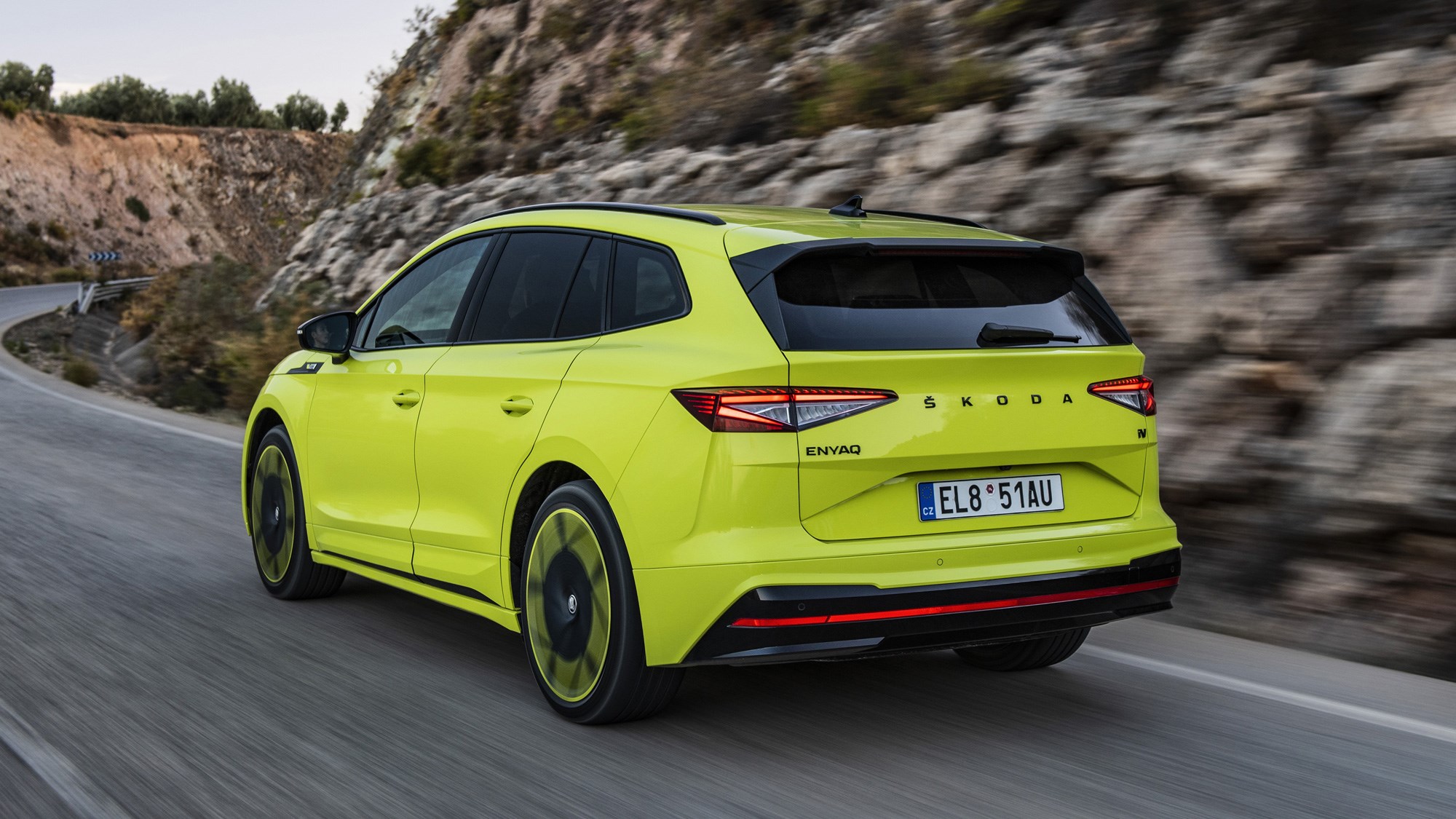► Dual-motor powertrain with 295bhp
► 0–62mph time of 6.5 seconds
► But is it worth it over the 80X model?
This one was inevitable. Skoda has already launched a vRS-badged version of the Enyaq Coupe, so it was only a matter of time before it dropped the same 295bhp dual-motor electric powertrain into its conventionally shaped electric SUV. And it’s an important move because the market is currently bursting with nippy pure-electric SUVs like the Kia EV6, Ford Mustang Mach-E and Tesla Model Y.
My biggest question for the new Skoda Enyaq iV vRS is whether it’s worth spending the extra money over the standard car. Prices for the new sporty flagship start from £52,670, making it nearly £1,000 pricier than the four-wheel drive 80x variant and around £10,000 dearer than the rear-wheel drive 80 model (which is already a very competent electric car with a maximum range of 339 miles).
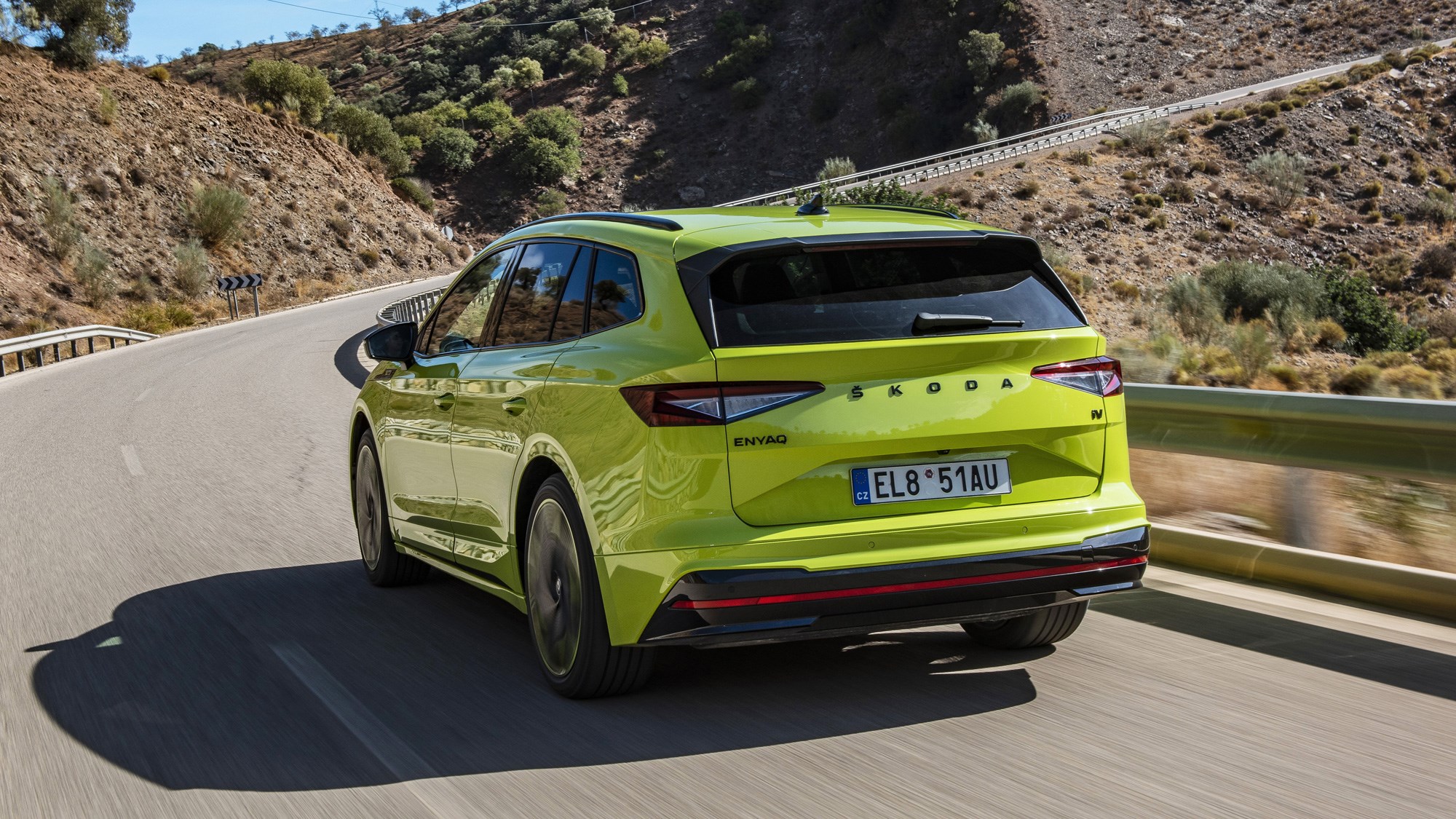
Let’s look at some performance figures. The Enyaq iV vRS develops 295bhp and 339lb/ft of torque, which Skoda says is enough for a 0–62mph time of 6.5 seconds and a 112mph top speed. Skoda’s claimed range figure of 323 miles is equally encouraging. The firm even says the car’s 82kWh battery can take on an 80 percent charge in just 36 minutes when connected to a 135kW outlet.
These figures look great in isolation, but they’re less impressive when you compare them to the cheaper 80x model. Power for the vRS is up by a mere 34bhp, while torque is increased by just 26lb/ft – and I don’t think that’s enough to make an appreciable difference in the real world.
What’s the Skoda Enyaq iV vRS like to drive?
Not bad, but it isn’t that much different to the standard Enyaq. It’s certainly not the sporty B-road barnstormer Skoda touts it to be – and that’s mainly due to its size and weight. Yes, Skoda has lowered the suspension by 10mm and fitted some tough new dampers, but it doesn’t matter how many fancy chassis components you throw at the car, it’s still a 2.2-tonne SUV.
As a result, there’s still quite a bit of body roll. Also, if you’re too ambitious with your corner entry speed the front end will simply wash away from the apex like it’s been hit by a landslide. The tyres are partly to blame for this understeer, though – they’re a special set of eco-friendly, low-rolling resistance Bridgestone Turanzas that simply aren’t as sticky as a traditional performance tyre.
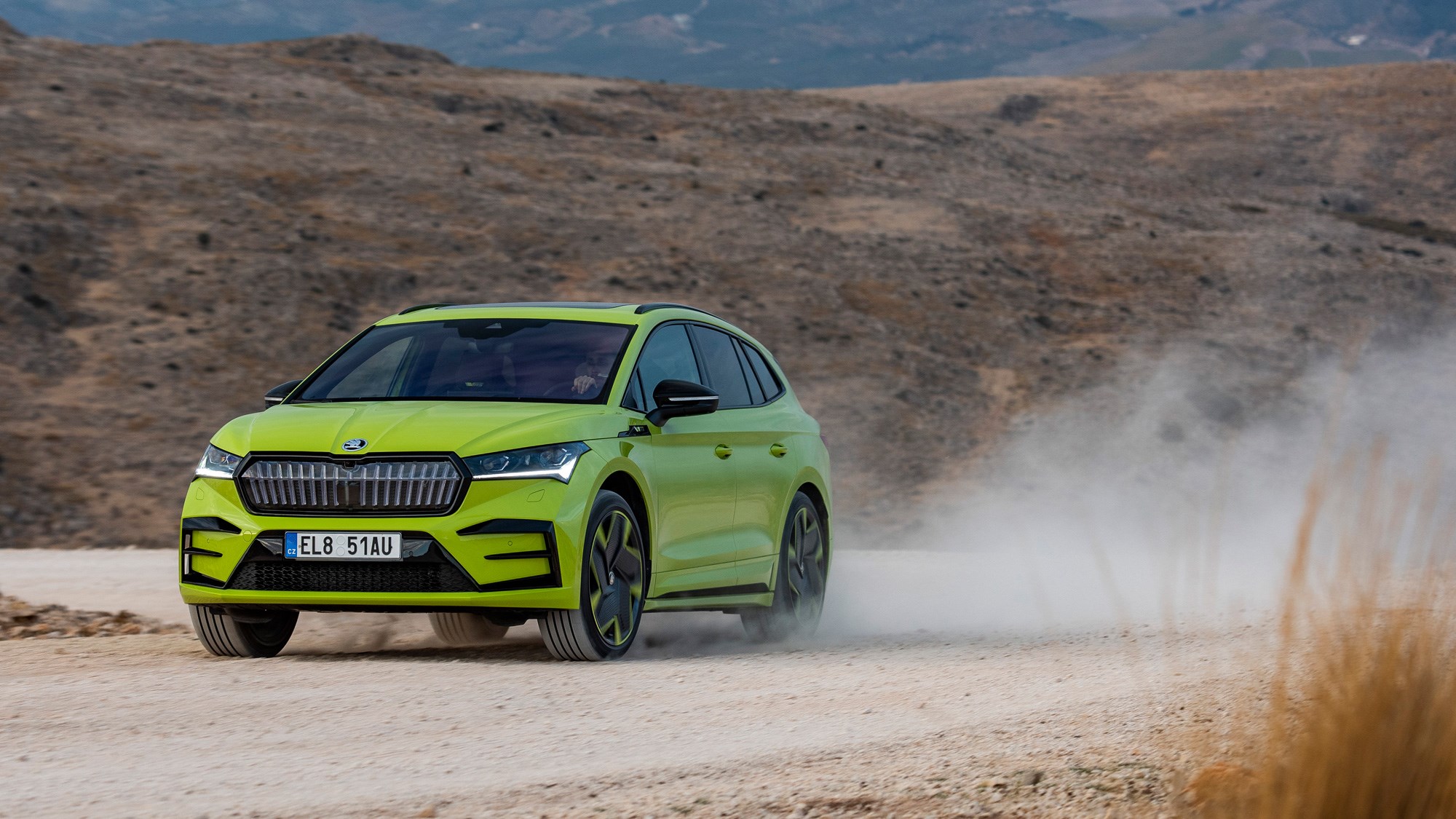
This isn’t to say the Enyaq vRS isn’t safe. Quite the contrary in fact – you’d need to be travelling at obscene speeds to get it irretrievably out of shape. Skoda’s traction and stability control systems do an excellent job of keeping wheel spin in check, but we’d have liked them to be a little less heavy handed in the vRS model. They’re too intrusive for something that’s supposed to be a driver’s car.
Drive down a twisty back road and you’ll find the front calipers are constantly snatching at the discs to prevent any form of slip. Try to power out of a corner and the ECU will clamp down on the rear motor until it knows there’s zero chance the rear wheels will spin – even at normal speeds on smooth roads. We even tried the Enyaq vRS on a dusty gravel track in the hope the loose surface would tease out some excitement, but the safety systems pulled almost all the fun out of the drive.
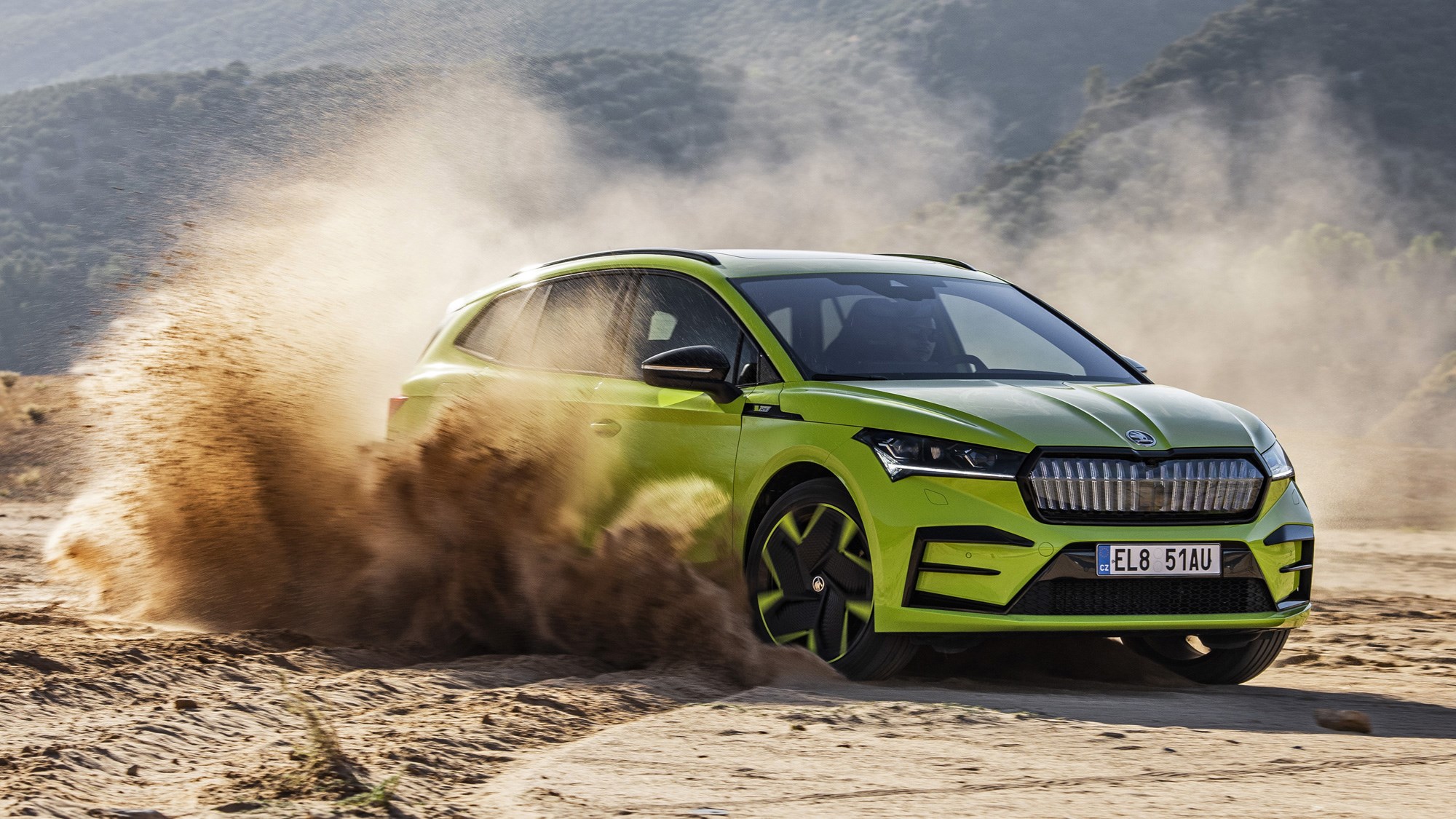
The steering is similarly disappointing. It offers almost no feedback and is constantly being adjusted by Skoda’s lane-keeping assist and evasive steering support systems, which sullies the experience when you’re on a good road. You can turn the systems off via the infotainment system, but they’re automatically reengaged every time you start the car. That’s annoying.
At least the vRS is similarly comfortable to the standard Enyaq. There’s a noticeably harder edge to the damping and the low-speed ride is slightly jigglier, but it smooths out well once you’re on the open road. It also feels very stable at speed, thanks to the battery’s placement under the cabin.
Crikey, you’re having whinge, aren’t you?
Maybe a bit, but I have my reasons. Skoda’s vRS badge carries with it a certain set of expectations – and I’m not sure the Enyaq can live up to them. Yes, the Czech firm’s hot petrol-powered models were never the most engaging cars to drive in their classes but, crucially, they were detectably better than their cheaper siblings.
Let me be very clear. The Enyaq vRS is not a bad car. It has loads of space inside, an enormous 585-litre boot, a crisp infotainment system and enough driver assistance technology to mitigate almost any hazard the road can throw at you. It’s ergonomic, too, with a cracking set of sports seats and loads of adjustability in the steering column.
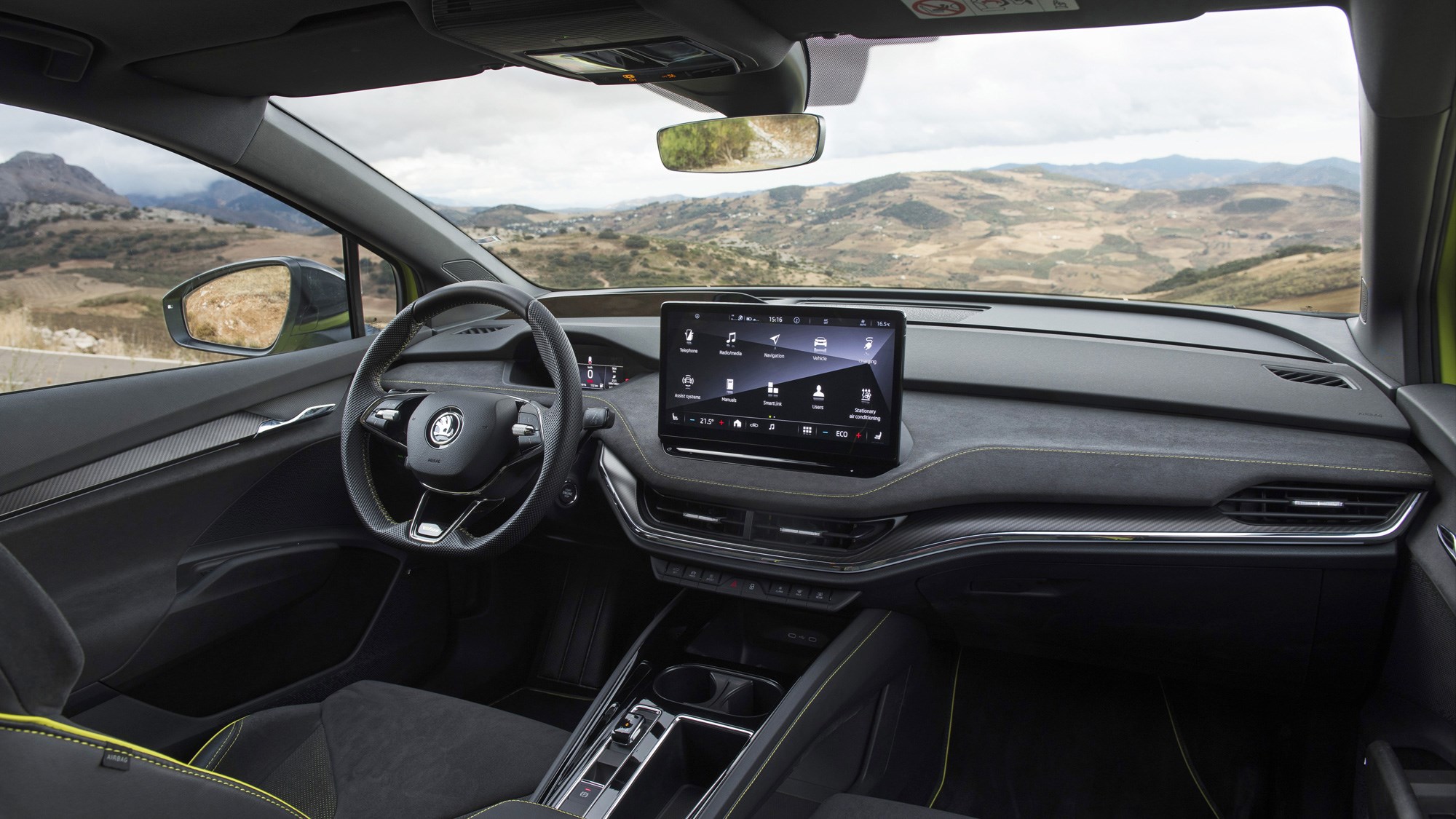
But the performance gains over the cheaper 80X model are very marginal and the experience behind the wheel is no more involving or exciting because of them. It isn’t like the vRS is any more capable, either, because the 80X model has the same four-wheel drive system and a longer range.
Verdict
In a strange way, the Skoda Enyaq vRS would have been better if it was worse. If Skoda’s engineers had placed less importance on the car’s maximum range and piled a whole lot more power into its electric powertrain, it would be infinitely more recommendable.
But as it stands, this ‘performance’ flagship would be utterly blown away by a comparably priced Tesla Model Y Long Range. The mid-range Kia EV6 GT-Line AWD would also massacre the Skoda in a straight line (and in the corners) for almost £1,000 less, while still offering a maximum range of more than 300 miles. Rivals like these make the Enyaq vRS feel like a bit of a feeble effort.
And, if that’s the case, why bother with the performance variant at all? You buy an Enyaq because you want comfort, space and convenience. As such, so I’d disregard the four-wheel-drive versions of the Enyaq altogether, opt for the rear-wheel 80 model and spend the £10,000 I’d save on a wallbox charger and posh holiday.
